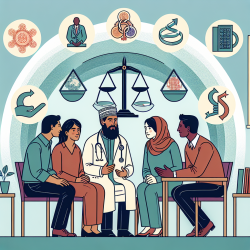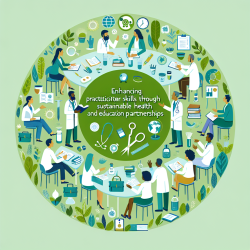Introduction
In the realm of adolescent development, particularly within Latino agricultural communities, the concept of social capital plays a pivotal role in shaping the wellbeing and future trajectories of youth. The study titled Building social capital to promote adolescent wellbeing: a qualitative study with teens in a Latino agricultural community provides valuable insights into how social capital can be harnessed to improve outcomes for adolescents. This blog post aims to distill the findings of this research into actionable strategies for practitioners working with youth in similar contexts.
Understanding Social Capital
Social capital is defined as the networks of relationships among people who live and work in a particular society, enabling that society to function effectively. It includes bonding, bridging, and linking social capital, each serving distinct roles in adolescent development:
- Bonding Social Capital: Trusting relationships within a close-knit group, such as family and peers.
- Bridging Social Capital: Connections with people from different social groups, such as teachers and community leaders.
- Linking Social Capital: Networks that connect individuals to institutions and resources beyond their immediate community.
Key Findings from the Study
The study conducted in Salinas, California, highlights the importance of bonding social capital within families, where strong ties with parents and near-peer relatives provide essential support. However, it also identifies gaps in bridging and linking social capital, where families struggle to connect youth to broader educational and healthcare resources.
Participants reported that while parents have a strong desire to promote healthful behaviors, they often lack the resources to help youth navigate complex systems like college applications and healthcare access. This underscores the need for external support from community members and institutions.
Implications for Practitioners
For practitioners, these findings offer several avenues for intervention:
- Strengthen Family Bonds: Encourage family-based interventions that enhance positive parenting skills and strengthen relationships between parents and youth. Programs that focus on building bonding capital can lead to improved mental health and reduced risky behaviors.
- Facilitate Bridging Connections: Work with schools and community organizations to create programs that connect youth with mentors, guidance counselors, and healthcare providers. These connections can provide the necessary guidance and resources that families may lack.
- Enhance Linking Opportunities: Advocate for policies and programs that facilitate access to higher education and healthcare resources. This could involve workshops for parents on navigating educational systems or partnerships with local healthcare providers to offer confidential services to youth.
Encouraging Further Research
The study highlights the need for further research into the specific forms and effects of social capital on Latino youth in rural settings. Practitioners are encouraged to engage in or support research initiatives that explore these dynamics, as understanding the unique challenges and opportunities within these communities is crucial for developing effective interventions.
To read the original research paper, please follow this link: Building social capital to promote adolescent wellbeing: a qualitative study with teens in a Latino agricultural community.










